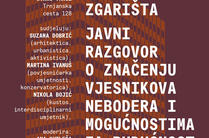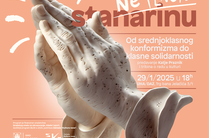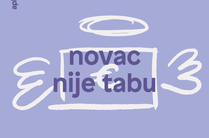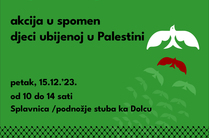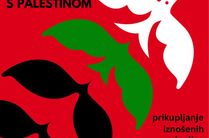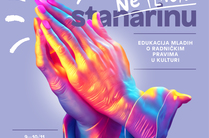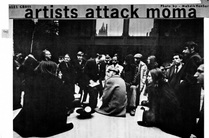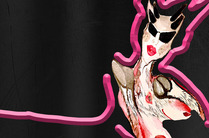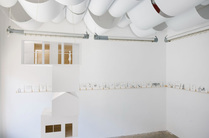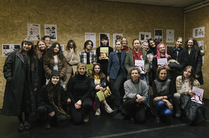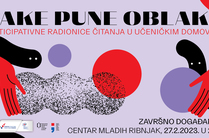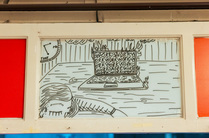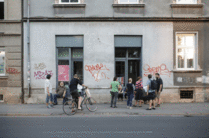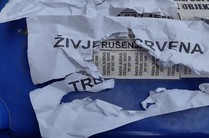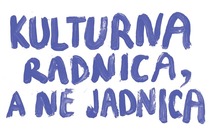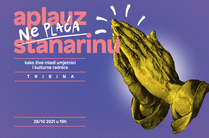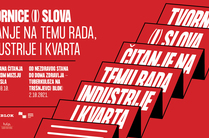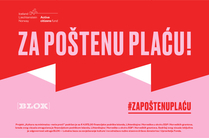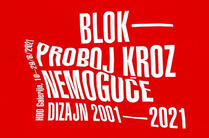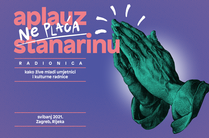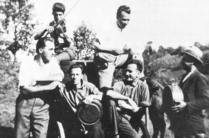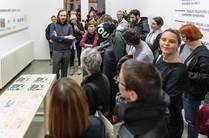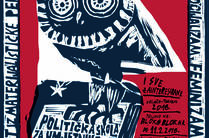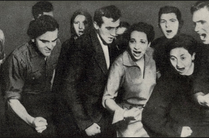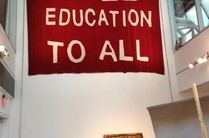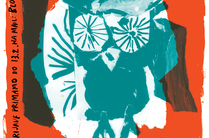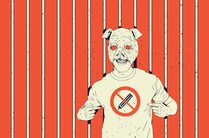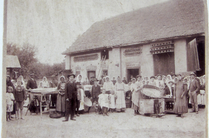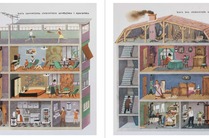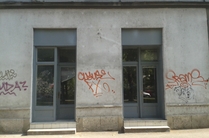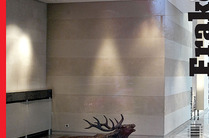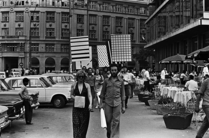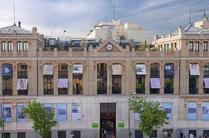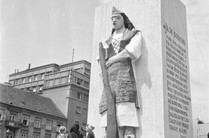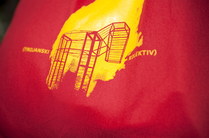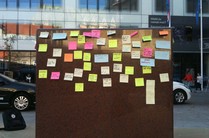ALMA GAČANIN: WORK HARD, PLAY HARD

ALMA GAČANIN: WORK HARD, PLAY HARD
exhibition, 6 – 23 July 2023
Nova BAZA, Nova cesta 66
OPENING: 6 July 2023 at 7 pm
Nikola Tesla Technical Museum, Savska cesta 18
HOW WELL DID YOU PERFORM TODAY, performance
Nova BAZA exhibition opening at 8 pm
Alma Gačanin's works can be read as a journal of sorts, primarily a work log. As she regularly emphasizes in her biography, Alma lives and works as an artist, regardless of the job she is currently performing. Is this a roundabout way of saying that one does not make a living from art, that usually another job is needed? A euphemism? Created over a relatively long period, from 2018 to date, the works reflect her various production positions: from living in her parents' home, where I could indulge in excellent self-care, snug as a bug, to becoming independent; I had to ruin it all and venture into the world of adventures, that is, of the precariat (As my mom would say!), and accepting various odd jobs, such as being a flight attendant, all through taking up a residency in New York, one of the world's art centers. Although journalesque, the works are not of an intimate nature; they are more in line with what Annie Ernaux calls auto-socio-fiction: a story about oneself through essential social optics. Therefore, they reflect the contexts in which they were created more than the author herself. She is, after all, unrecognizable.
The exhibition “Work Hard, Play Hard” features the works created over the past five years, within a relatively long period but with a short production time, done swiftly, as is customary when journaling. Most drawing ideas originate from daily notes, sometimes from just a word in the Notes app... they are often symbolically charged in accordance with the social environment, like in the new American series. In the most recent works, those created during the New York residency, we notice: imperialism, the military-industrial complex, symbols of MAGA patriotism. Even the technique used in her works is imbued with meaning. Watercolor, known from feminist interventions in art history, is marked as a “female technique;” it’s quick, does not require large formats or studio conditions, can be created in small spaces, often in a domestic setting, alongside socially reproductive labor, as it used to be the only accessible technique for female artists. Watercolor is a poetic technique, most similar to writing. I used to paint with oils and acrylics for a long time, and it influenced my perception of time; it confined and slowed me down. I can create drawings and watercolors very quickly, which suits my impatience! And it also works well for me as a treatment because I work without a sketch.
In Alma's works, we encounter monstrous creatures, half-women half-animals, sometimes missing limbs, sometimes with multiple arms and legs, often with a tail. These queer beings walk on all fours, sometimes on their hands; they always have strong muscles, claws, and hairy legs. They are exaggerated, somewhat eerie, but fundamentally humorous. Humor is an essential element of Alma's work, her central strategy, as it is crucial for camaraderie and feminism, and therefore for my own work through which I communicate a wide range of ideas stemming from everyday struggles. However, we cannot escape the impression of the grotesque, the ambivalence between comedy and horror, the real and the fantastic. Are we looking at a world turned upside down or a terrifying reality? At some point, I recognized my alter ego in the drawings that I named Djevina and realized that in doing so, I am seizing freedom constantly and repeatedly.
This queer body can also be read as an antipode to representations that we identify with classical art: the pure, polished, perfect, and, of course, white body. In contrast to that sublime depiction, we observe an unfinished body, a body that rearranges and constantly dissolves itself. The emphasis is on its parts that are open to the external world: the mouth, the vagina, breasts, the anal opening. The special sexual emphasis attributed to female legs is here destabilized, challenged, threatened by claws, hair, strong quadriceps. The grotesque erotic body thus escapes into the unknown, the uncontrolled, as an aesthetic alternative to conventional representations. “This nakedness is not an expression of her own feelings; it is a sign of her submission to the owner's feelings or demands. (The owner of both woman and painting),” we recall Berger's observations on the nude.* It is essential to me that they are somehow altered and monstrous. That's why I give them those qualities that herald trouble, threat, and danger. It is almost certain that the protagonists of my drawings will cause some harm, create chaos, fulfill their purpose.
The body is an important feminist theme and often a significant medium in feminist art. The question of body representation in art and its role in reproducing gender divides were at the center of feminist interests in the 1970s. Monstrosity was precisely one of the key operative concepts for feminist interventions in art, criticizing the so-called male gaze and seeking to redefine gendered aesthetics. Monstrosity as a feminist aesthetic strategy, unruly bodies that matter, has been analyzed most recently by Lauren Elkin, whose book titled “Art Monsters: On Beauty and Excess” is to be released next month. In my work, I have created a female body that is constantly transforming, but in a negative sense, embodying the Freudian unheimlich. However, I want to draw special attention to another aspect of monstrosity here: (monstrous) bodies under the pressure of productivity. The monstrous nature of capitalism, whose basic characteristics, as Marx noted, are invisible. Many have already pointed out Marx's frequent use of monstrous figures in Capital to describe how capitalism works. One of the most cited figures is the one related to the appropriation of surplus value: “Capital is dead labour, which, vampire-like, lives only by sucking living labour, and lives the more, the more labour it sucks.”** Therefore, every discourse on labour in capitalism is also a discourse on coercion, compulsion, discipline, subordination, and alienation. The same goes for the imperative of self-work. The figures in the works (the character Djevina, or perhaps Alma herself) have claws to climb the social ladder better and hold on tighter once they ascend, they walk on all fours if necessary, if the ceiling is too low, they have strong muscles, sometimes with multiple arms and legs, two pairs of breasts to handle all the daily tasks. The titles of the works are painfully clear: #useyourpotential, No pain no gain, Fighter, Work hard play hard, I will make it... The everyday suffering, through Alma's aesthetic treatment, transitions into S&M, delving into the realm of sexual practices (sexual labour?). I use the visual play with S&M to question power relations and the concept of obedience in the workplace. However, it also allows me to criticize the capitalist hierarchy and the insidious relationships within work collectives, where elements of adult play are present and where a safe word often does not exist.
Turning established notions upside down and grotesquely connecting diverse and even contradictory elements are at the core of Alma's artistic process. The monstrous beings, Djevina, Alma, Kentaurica, leave us with conflicting impressions: they comfort us when we recognize ourselves in certain situations, they evoke laughter, but not without a certain level of apprehension. Turning the world upside down also results in a reversal of power dynamics, albeit briefly and imaginary, but enough to remind us that the history of subjugation, alienation, and discipline has also been a history of formidable resistances.
Vesna Vuković
* Berger, John. Ways of Seeing. Penguin Books. 2008, p. 52
** Marx, Karl. Capital. Volume One. trans. Ben Fawkes. The Pelican Marx Library. Harmondsworth: Penguin Books. 1976, p. 342.
Alma Gačanin (Sarajevo, 1988) lives and works as an artist, regardless of the job she might have at any given time. She holds a Master's degree in Fine Arts Education from the Academy of Fine Arts in Sarajevo, specializing in Art Education. She creates drawings, photography, video, and performance art. In 2022, she received the ZVONO Award for the best artist in Bosnia and Herzegovina. She represented Bosnia and Herzegovina at the Biennale of Young Artists from Europe and the Mediterranean in Milan in 2015. Her work is based on exploring the specificities of labour and the precarity of certain occupations, with a particular focus on the position of women in capitalism and gendered division of labor. She identifies as a feminist in her personal life and in the roles she assumes as an artist-worker. Alma also writes poetry and has been published in magazines, anthologies, and online portals in Bosnia and Herzegovina and the region.
PRODUCTION AND ORGANIZATION: BLOK
CURATOR: Vesna Vuković
EXHIBITION DESIGN: Nina Bačun
FRAME PRODUCTION: Ramasutra
TRANSLATION: Dunja Opatić
ACKNOWLEDGMENTS: Lala Raščić, Technical Museum Nikola Tesla, Kosjenka Laszlo Klemar, Markita Franulić, Solidarna Foundation, Karla Pudar
GALLERY OPENING HOURS:
TUE — FRI: 4 pm — 8 pm
SAT — SUN: 11 am — 3 pm
FINANCIAL SUPPORT: CITY OF ZAGREB, CITY OFFICE FOR CULTURE, INTERNATIONAL RELATIONS AND CIVIL SOCIETY, THE EMBASSY OF BOSNIA AND HERZEGOVINA IN CROATIA
THE ANNUAL PROGRAM OF BAZA IS SUPPORTED BY “KULTURA NOVA” FOUNDATION.
